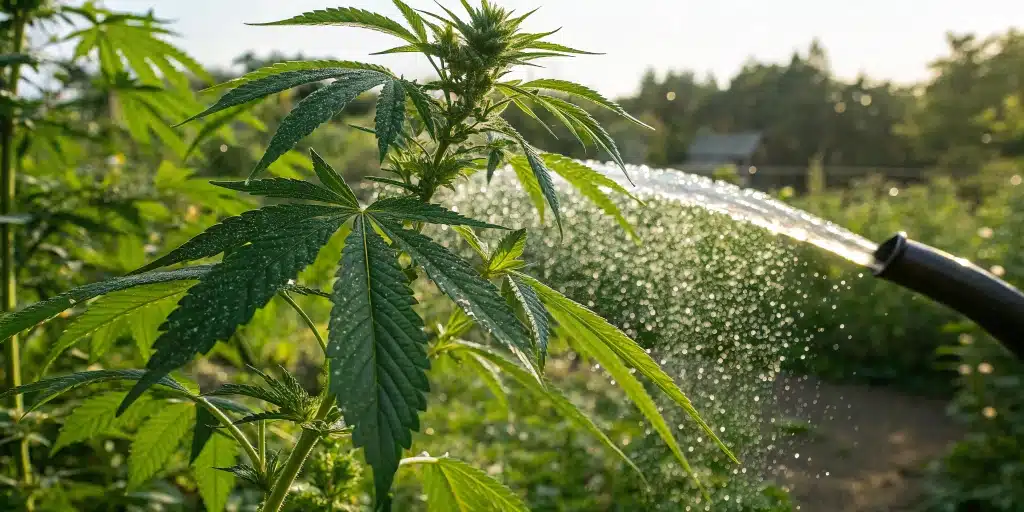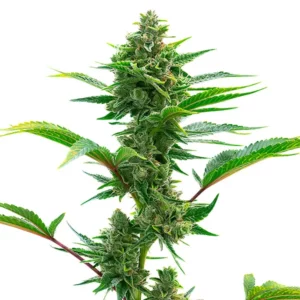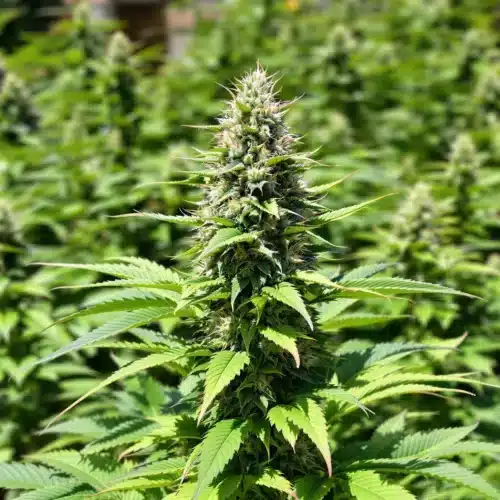Knowing Your Plant’s Nutrient Needs Outdoors
Key Growth Stages and Nutrient Requirements
Cannabis plants change as they grow, and each stage needs its own mix of nutrients. During the early vegetative stage, plants benefit from higher nitrogen levels to build strong leaves and stems. As they move into flowering, they need more phosphorus and potassium to help form buds. Adjusting your outdoor grow nutrient schedule according to these stages ensures that your plants receive the right elements at the right time, leading to healthy, vigorous growth.
In addition, knowing your plant’s nutrient needs can save time and prevent mistakes. It is essential to monitor plant responses and adapt your outdoor grow nutrient schedule based on visual cues and soil tests. When the right balance is met, your garden thrives even in varying climates. Regular observations allow for timely adjustments, ensuring that each growth stage is adequately nourished with the proper nutrients.
Differences Between Vegetative and Flowering Phases
The vegetative and flowering phases of cannabis growth have distinct nutrient demands. In the vegetative phase, plants require an abundance of nitrogen to support rapid cell growth and leaf development. Conversely, the flowering phase needs a shift in nutrient balance, lower nitrogen levels and higher phosphorus and potassium, to promote bud formation and resin production. Tailoring your outdoor grow nutrient schedule to these differences helps maintain healthy plant development while maximizing yield quality throughout the entire growing cycle.
Keeping these phases distinct is vital for effective nutrient management. When you fine-tune your outdoor grow nutrient schedule to match each phase, you avoid common pitfalls like nutrient burn or deficiency. Simple adjustments in feeding routines based on plant stage can result in vibrant, robust plants. This clear separation of nutrient needs makes it easier to plan and execute a schedule that supports every part of your plant’s life cycle reliably.
Promos & Deals
Creating a Balanced Outdoor Grow Nutrient Schedule
Essential Nutrients for Outdoor Cannabis
For a balanced outdoor grow nutrient schedule, focus on the three primary nutrients: nitrogen, phosphorus, and potassium. Nitrogen supports leaf growth, phosphorus is key for root development and flowering, and potassium strengthens overall plant health. Secondary nutrients and trace minerals, such as calcium and magnesium, also play important roles in plant metabolism. Providing these nutrients in the right proportions creates a solid foundation for robust cannabis growth outdoors, ensuring that your plants thrive in all conditions.
Integrating these essential nutrients into your outdoor grow nutrient schedule is not complicated when you rely on high-quality, proven products. Most nutrient mixes are designed to cover all these requirements with simple adjustments based on your local soil and climate. By testing your soil periodically, you can customize your feeding plan to match the specific needs of your plants. This approach simplifies nutrient management and supports sustainable growth throughout the season.
Customizing Your Feed Based on Soil and Climate
Every outdoor garden is unique, and your nutrient schedule must reflect local conditions. Soil composition, pH levels, and moisture content all influence nutrient uptake. A tailored outdoor grow nutrient schedule accounts for these variables, ensuring that your plants receive adequate nutrition without excess. Use soil tests and local climate data to adjust nutrient ratios and feeding frequency. This customization makes your feeding plan both efficient and effective, allowing your cannabis plants to reach their full potential regardless of environmental challenges.
Adapting your nutrient plan to your specific outdoor setting is essential for success. When you match your outdoor grow nutrient schedule with local soil and climate conditions, you minimize the risk of nutrient lockout or deficiency. Simple modifications based on periodic testing can lead to better absorption and overall plant health. A personalized approach makes each feeding session count, supporting a healthy, productive garden that consistently produces quality yields.

Timing and Frequency of Nutrient Applications
Weekly Feeding Patterns for Vegetative Growth
During the vegetative stage, an effective outdoor grow nutrient schedule involves consistent, weekly feedings. In this phase, plants absorb nutrients rapidly as they build leaves and stems. A regular feeding schedule provides steady nutrition without overwhelming the roots. Monitor your plants for signs of overfeeding or underfeeding and adjust the frequency as needed. A consistent weekly routine ensures that your plants receive a balanced mix of nutrients, fueling vigorous vegetative growth and setting the stage for a strong flowering phase.
Maintaining this schedule requires careful attention to water quality and nutrient concentration. When following your outdoor grow nutrient schedule, use water that is properly pH-balanced and free from contaminants. Regular observations of plant color and vigor help determine if adjustments are needed. This steady, measured approach supports healthy development and creates a reliable foundation for future stages of growth in your outdoor garden.
Adjustments for the Flowering Stage
As your plants transition into the flowering stage, shift your outdoor grow nutrient schedule to reduce nitrogen while increasing phosphorus and potassium. This change supports bud development and enhances resin production, leading to dense, flavorful flowers. Adjust feeding frequency and nutrient concentration to match the slower growth rate during this phase. Keep a close eye on plant responses to determine the precise timing for these adjustments, ensuring that every nutrient application contributes positively to bud formation and overall plant health.
In addition, environmental factors such as temperature and humidity may influence nutrient uptake during flowering. Fine-tuning your outdoor grow nutrient schedule during this stage is key to preventing issues like nutrient burn or deficiency. By gradually modifying your feeding regimen, you create an optimal environment that supports robust flowering. Consistent attention to these adjustments results in higher quality yields and a more rewarding outdoor cultivation process.
Monitoring and Adjusting Your Nutrient Schedule
Recognizing Signs of Overfeeding and Underfeeding
A well-managed outdoor grow nutrient schedule requires constant vigilance. Overfeeding may cause burnt leaf tips and nutrient lockout, while underfeeding leads to slow growth and pale leaves. Learn to recognize these signs early and adjust your nutrient applications accordingly. Regular monitoring of plant health through visual checks and soil tests is essential. A balanced outdoor grow nutrient schedule ensures that your plants receive just the right amount of nutrients, promoting robust growth without adverse effects from over- or underfeeding.
Being proactive in monitoring helps you catch issues before they become serious. When you observe your plants closely, you can quickly determine if the nutrient mix is too strong or too weak. Adjustments based on visible signs and periodic testing keep your outdoor grow nutrient schedule effective throughout the season. This attentive management supports steady, healthy growth and prevents common feeding errors that could jeopardize your harvest.
Fine-Tuning Nutrient Ratios Based on Plant Feedback
Your outdoor grow nutrient schedule should be flexible enough to adapt to the evolving needs of your plants. As your garden develops, subtle changes in leaf color, growth rate, and overall vigor provide important feedback. Use this feedback to fine-tune nutrient ratios and adjust feeding volumes. Small, gradual changes are more effective than drastic shifts. By responding to plant signals, you can optimize your nutrient schedule to maintain a balanced and healthy environment for robust cannabis growth outdoors.
This adaptive approach allows your outdoor grow nutrient schedule to remain dynamic and responsive. Regular feedback from your plants, combined with soil test results, gives you the data needed to make informed adjustments. When you fine-tune nutrient ratios in small increments, you reduce the risk of sudden imbalances. This steady calibration ensures that your garden remains resilient and productive throughout every phase of growth.
Practical Tips for Maintaining an Outdoor Nutrient Schedule
Tools and Techniques for Precise Application
Implementing your outdoor grow nutrient schedule successfully requires the right tools. Use measuring cups, pH meters, and moisture sensors to ensure precise nutrient application. These tools help you mix and deliver the correct dosage, minimizing the risk of over- or underfeeding. Consistent measurement and application techniques simplify the process, allowing you to focus on your plants’ progress. A precise nutrient application system is a vital component of an effective outdoor grow nutrient schedule, ensuring that every drop counts toward a healthy, thriving garden.
Careful application using proper tools enhances the efficiency of your feeding routine. When you adhere to your outdoor grow nutrient schedule with precision, you minimize errors and maximize plant uptake. These techniques not only improve nutrient delivery but also help maintain soil balance and prevent buildup. Reliable tools and systematic practices support a well-organized nutrient management plan, ensuring that your garden remains productive and resilient throughout the growing season.
Long-Term Strategies for Consistent, Healthy Growth
Developing a long-term outdoor grow nutrient schedule involves planning and periodic review. Create a record of feeding times, nutrient concentrations, and plant responses. Over time, these records help you refine your approach and adjust for seasonal variations. Consistency in monitoring and application is key to sustaining healthy growth. Implement strategies such as rotating nutrient sources and integrating organic supplements to support long-term plant health and soil vitality. A reliable nutrient schedule becomes the backbone of your outdoor garden, ensuring a steady supply of essential nutrients throughout the season.
Long-term planning in your outdoor grow nutrient schedule builds resilience and efficiency. By recording each feeding cycle and reviewing plant performance, you can identify trends and make informed adjustments. These strategies help maintain balance in your nutrient mix and support continuous improvement in plant health. With a well-documented plan, your garden becomes a model of consistent, thriving growth that meets the demands of every stage in the cultivation process.

FAQs about Outdoor grow nutrient schedule
What factors determine the best outdoor grow nutrient schedule?
An outdoor grow nutrient schedule depends on your plant’s stage and local climate. In the early vegetative phase, moderate nitrogen levels with balanced phosphorus and potassium support vigorous growth. During flowering, reduce nitrogen and increase phosphorus to boost bud development. Adjust based on soil tests and weather conditions. Consistent monitoring and gradual adjustments are key to maintaining plant health and maximizing yield throughout the cycle.
How should I adjust my outdoor grow nutrient schedule during the growing season?
Outdoor grow nutrient schedule planning must account for seasonal variations and environmental factors. In warm weather, plants require less frequent feeding due to faster nutrient uptake. In cooler conditions, slower growth means feeding may be reduced. Adjust your nutrient schedule based on plant response and soil moisture. Monitor plant coloration and leaf structure for signs of deficiency or excess, fine-tune your approach to optimize growth.
What steps can I take if my plants show signs of nutrient imbalance?
An outdoor grow nutrient schedule must be adaptable to changing weather and soil conditions. Regular testing of soil nutrient levels and pH helps determine the correct feeding amounts. It is important to note that overfeeding can be as harmful as underfeeding. Monitor plant responses carefully and adjust the schedule as needed. Flexibility in your nutrient schedule ensures healthy growth and a productive harvest every season.
















